Getting outside and learning with the children in your setting is key to improving their development in all areas. We wanted to give you a bit of inspiration on what activities you could do in your settings, or trips you could take, with supportive information along the way.
So, why is outdoor play so important?
There are so many benefits of outdoor play. Key benefits include children having freedom and space outside to express themselves and more opportunity for energetic play enhancing health and fitness.
When outside, all of a child’s senses are stimulated and there is direct contact with the weather, seasons and natural world. This enables them to learn about risk in a managed environment and how to cope with these risks.
This all contributes to creating a healthy mind, body confidence and a high self-esteem within a child.
Read about further benefits in our outdoor play practice guide.
Start building and moving!
We have loads of creative ideas that you can use in your settings. Thanks to all who contributed these activities in the hope of inspiring others!
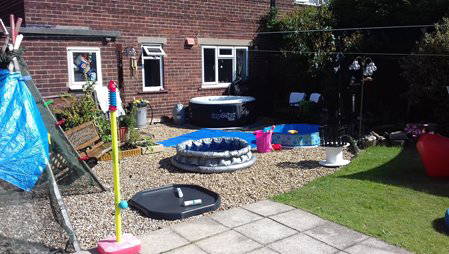
Lynn Atkinson – “We had some great sunshine so had a pool party. Paddling pool, jelly bath and shaving foam”
Lynn created a whole range of activities from a jelly bath so children can explore textures to a wigwam for the children to use their imagination in. To extend the learning of a child in a jelly bath, introduce shapes such as balls or sensory blocks.
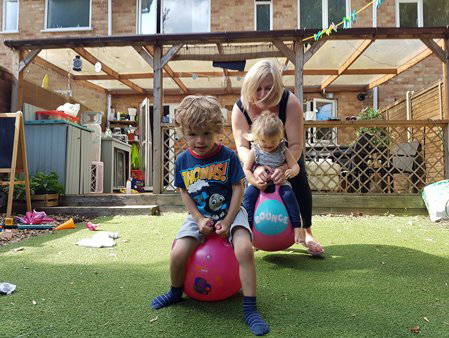
Sarah Sweeney – “We’ve had a sports day! Egg & spoon, sack race, running, hopping and space hoppers”
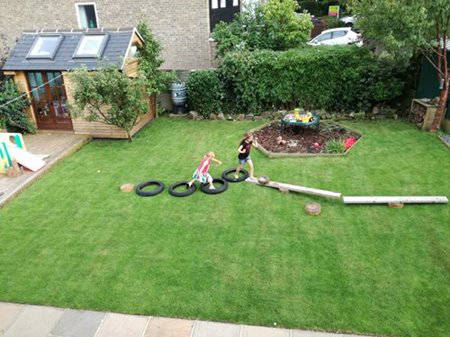
Kimberly Forteath – “Making obstacle courses in the garden”
Looking for activities to improve physical development? Both Sarah and Kimberly built obstacle courses in the garden. Balancing on the planks of wood, holding the egg on a spoon are both ways of improving fine and gross motor skill.
Creating a ‘sports day’ out of the course then incorporates personal, social, and emotional development as well as communication and language as the children take turns and have to listen to instructions.
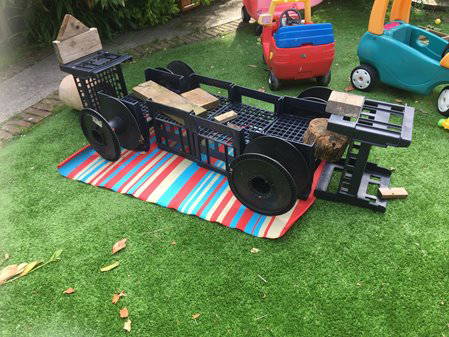
Sylvia Butcher – “Using ‘spare parts’, this is the ‘racing car’ one child built without any help or guidance”
Letting children experiment with ‘loose parts play’ can lead to some amazing creations, small or large, as with Sylvia’s children who made a racing car outside in the garden.
Be messy!
As you’re outside, don’t be afraid to let the children get messy!
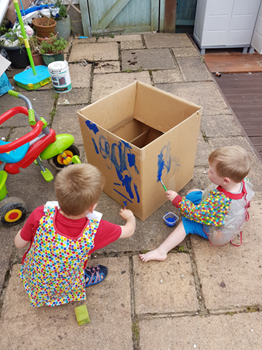
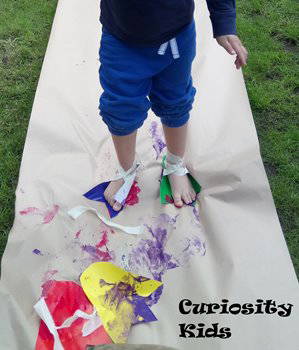
Why not take simple activities that we might see as every day, on a small scale and grow them further outside. Jennifer McInaily took inspiration from a child’s interest in a television show (above left) and “had some messy outdoor play painting a box to become Chase’s car from Paw Patrol”.
Angela Burns (above right) developed extended learning for her children “waddling like ducks after reading Dr. Seuss” and creating an outdoor, physical activity as the children make duck footprints on a large sheet of paper.
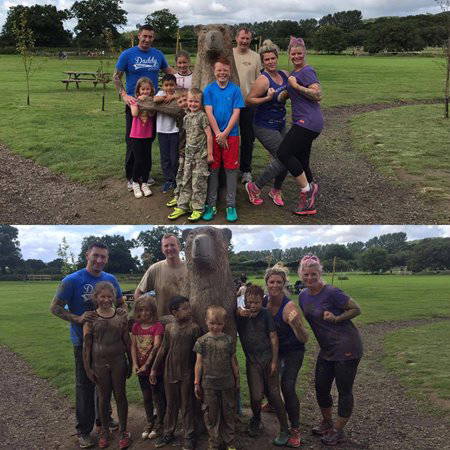
Manuela Summers – “It was great and we all loved it so much! Assault course, muddy puddles, walking through a pond, climbing over hay bales, swinging on ropes across the water. Fun and laughter by all”
Finally, get out into the local community and see what events are running nearby to your setting. You might find something like Manuela did with her mindees and friends as they got very messy at the Bear Trail near Exeter. This is a great activity mainly for key aspects of the EYFS including understanding the whole, physical activity and personal, social and emotional development.
Explore textures
As part of your five senses, touch is a key sense for early years, especially babies who learn with their touch before they can speak. This is why, exploring textures that are soft, hard, rough or smooth, for example, can significantly improve a child’s development, with new and exciting surfaces.
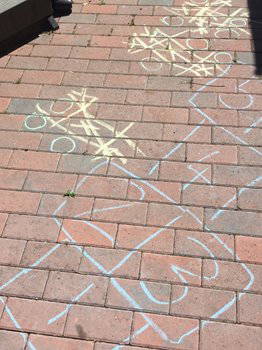
Joanne Chorlton “We got the chalks out and played hopscotch and noughts and crosses!”
Incorporate mark making into your outdoor activities using washable chalk on the floor. You can play all sorts of games as Joanne (above) did using chalk for “hopscotch and noughts and crosses!”.
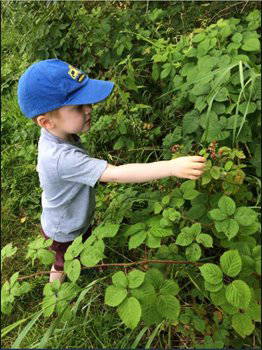
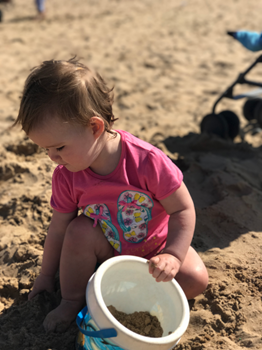
Get involved with the local produce as Charlotte (above left) did while “blackberry picking at the park”. The children will then learn about where blackberries come from, how they grow, why they need water and sunlight to survive, as well as how they are then turned into a “yummy blackberry crumble” for dinner!
Sue (above right) took her children out for a trip to the beach, letting the children dig and build sandcastles in the sunshine.
Wherever you are, there are opportunities for extended learning with outdoor activities, whether this is out in your garden, at the local park or a community event, there is something to suit all childcare practitioners and their children.
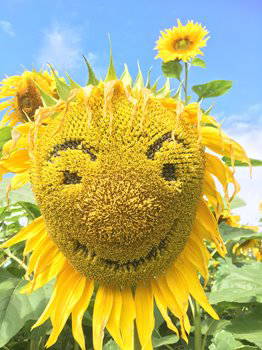
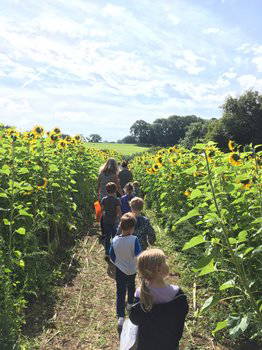
Nicola Parrett – “We went into a sunflower maze it was amazing”
Additional support:
- Bringing books and stories outdoors – blog from the BookTrust
- Get further ideas over on our Pinterest page!
- Outdoor play practice guide
- Outdoor play factsheet
- Full outdoor play video
- The great outdoors blog – Pippa Ashton, childminder
- Think before they bounce! – trampoline safety blog
- The Forestry Commission – Be a Gruffalo spotter
